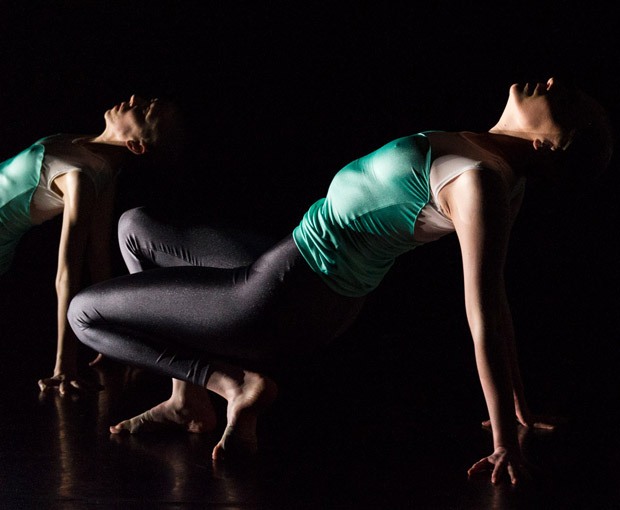
© Foteini Christofilopoulou. (Click image for larger version)
Julie Cunningham & Company
Double Bill: Returning, To Be Me
★★★✰✰
London, Barbican Pit,
8 March 2017
Julie Cunningham interview (Mar 2017)
Gallery of pictures by Foteini Christofilopoulou
twitter.com/j_middlec
www.barbican.org.uk
Can dance be non-gender specific? That’s an issue Julie Cunningham sets out to investigate in her Double Bill for her own company, launched in the Barbican’s small studio theatre. So far, there are just four members: three shaven-headed (Harry Alexander, Alexander Williams and Cunningham herself), one with long blonde hair (Hannah Burfield). They wear identical outfits, designed by Stevie Stewart and Cunningham. The choreography makes no distinction between the sexes – there is no male-female partnering.
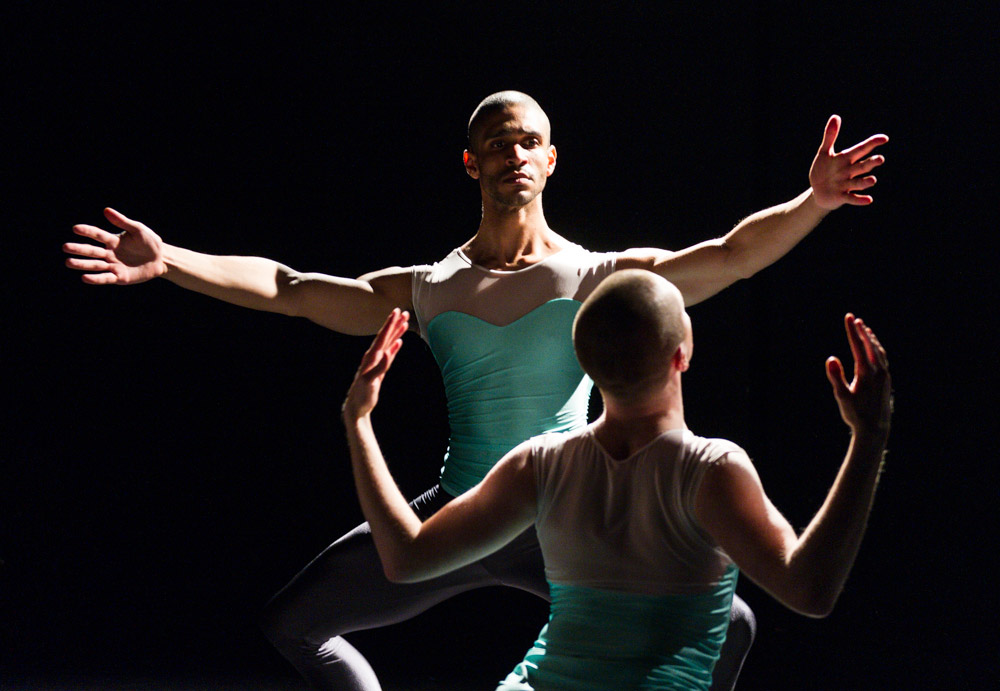
© Foteini Christofilopoulou. (Click image for larger version)
Yet all four are physically distinct in the ways they move, with Cunningham the only one able to appear androgynous. She’s an elegant, articulate dancer who performed for ten years with Merce Cunningham’s company, then with Michael Clark for another three, before turning to choreography. Her two latest pieces, Returning and To Be Me, acknowledge their influences in giving her choreography a formal framework as she develops her own dance language.
She relies on other artists’ voices to express her concerns: that of transgender Antony Hegarty (now known as Anohni) for Returning and the performance poet Kate Tempest for To Be Me. The programme opens with Returning, featuring Anohni’s male/female voice in lyrics about universal wavelengths and the feminisation of the deities. (I looked them up via Google because their meaning was elusive, to say the least.)

© Foteini Christofilopoulou. (Click image for larger version)
The four dancers wear unforgiving costumes: turquoise tops with bra shapes and ruched cummerbunds that descend to become skirts over navy tights. Initially, arms are held curved, elbows softened in graceful ports de bras; deep pliés alternate with stiff-legged pacing and sensual hip wiggles. When Cunningham leaves, the others move slowly and solemnly under lighting (by Richard Godkin) suggesting the moon that Anohni burbles on about. Their contemplative groupings are adroitly composed, their lines harmonious.
Cunningham returns for an assertive duet with Burfield, after a burst of Ravel’s shimmering music for all four. The piece has been leading up to her final solo, rooted to the spot, arms aspiring towards the light. She moves with absolute control, asserting her confident identity as Anohni/Antony sings ‘Who am I to feel so free?’ Cunningham hasn’t fully earned a response since the songs and segments haven’t cohered convincingly.

© Foteini Christofilopoulou. (Click image for larger version)
To Be Me seems more heartfelt. All four enter in silence, costumed in red and black, and confront us in a line, being themselves. Kate Tempest’s voice raps poems from her collection Hold Your Own, with an updating of the Tiresias myth: a 15-year old boy becomes a woman, then a man, then a prophet unhonoured in his old age. Cunningham responds to the rhythms and rhymes of Tempest’s chanting, with a narrative undercurrent. She and Alexander Williams, both more or less the same height, dance as mirror images: Tiresias as male and female.
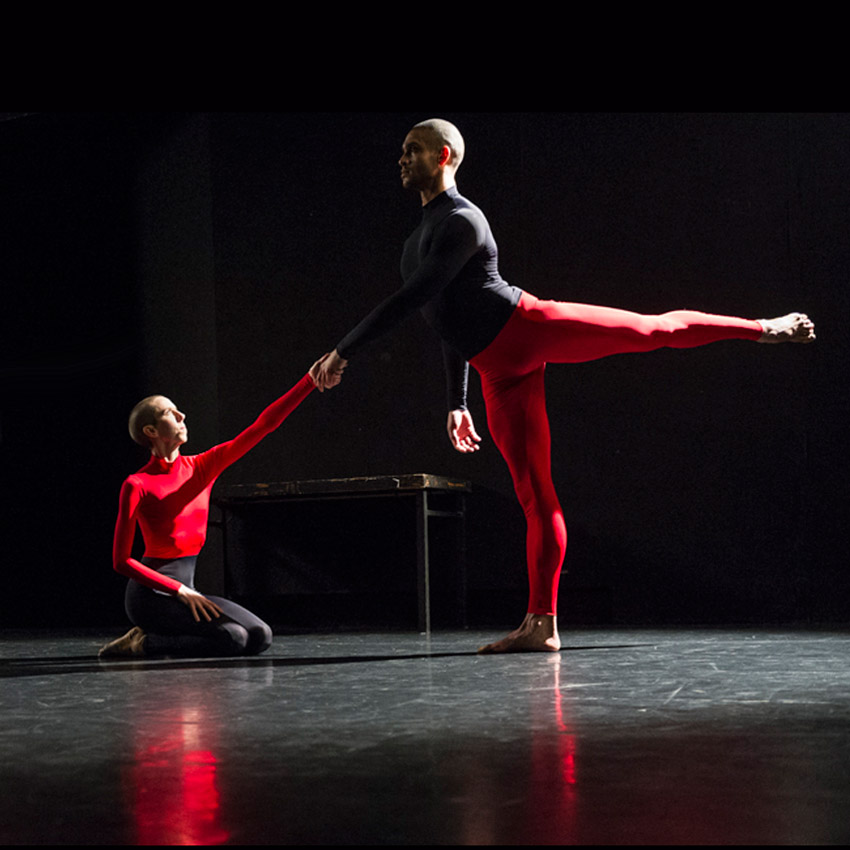
© Foteini Christofilopoulou. (Click image for larger version)
Tall Harry Alexander and small Hannah Burfield could be parents or representatives of society, attacking both genders of Tiresias in turn. Cunningham is the survivor, the hero(ine) ‘born strong, born wrong’. The dancing becomes vehement, impassioned, emphasising the chiming inflections of Tempest’s querulous voice. The poet sounds so indignant that she and the solemn-faced dancers appear to be hectoring their audience into submission.

© Foteini Christofilopoulou. (Click image for larger version)
A final poem, ‘Man Down’, calls for compassion and acceptance that we are all combinations of male and female. The message is in the words rather than in the bodies of the dancers. These are not hyper-flexible acrobats whose gender might be a mystery. Their male and female personalities are distinct, however much suppressed by their earnest unisex presentation. But Cunningham has found a way to convey her concern with sexual fluidity without being over-literal, and she has the technical ability to develop her choreographic ideas.












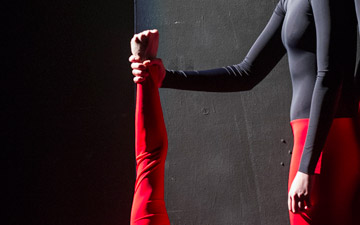
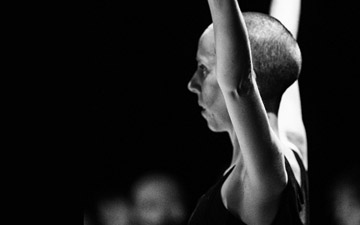
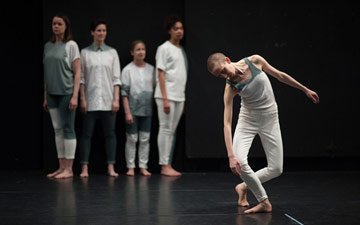


You must be logged in to post a comment.